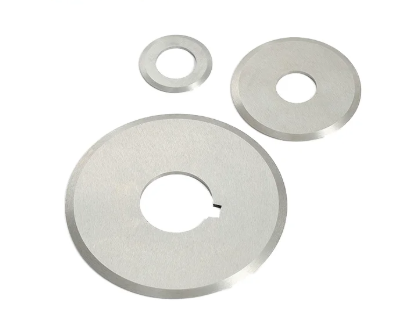The Uses of Blades
To choose the right circular blade, you first need to know how it will be used. This can involve cutting materials such as wood, metal, and plastic, each of which requires a specific type of blade. For example: blades used for ripping wood have fewer teeth and large gullets to quickly remove material, while those designed for cross-cutting wood have many teeth to achieve a finer finish. Similarly, cutting metal requires a blade with a different tooth configuration to handle the hardness and heat generated during cutting.
Blade material
The material of a blade is a crucial factor that determines its performance and service life. Although High-Speed Steel (HSS) blades are suitable for a variety of materials, their service life is shorter than that of carbide blades, which are harder and more heat-resistant. Diamond blades provide extra strength for more demanding applications as well as when cutting stone or concrete blocks.
Blade size
For circular blades, size matters. The diameter of the blade must match the thickness of the material and the capability of the machine. Additionally, the size of the arbor hole must align with the spindle on the machine to ensure a secure fit and prevent wobbling during operation, which could lead to uneven cuts and safety hazards.
Tooth configuration
The main cutting characteristics of circular blades include the number of teeth, pitch, and geometry. While more teeth generally result in smoother cuts, they also remove material more slowly. Flat-top teeth are ideal for rough cutting, whereas Alternate Top Bevel (ATB) teeth can provide a finer finish. Hi-ATB teeth: High Alternate Top Bevel (Hi-ATB) teeth are specifically designed for ultra-smooth cutting of hardwoods and laminates.
Kerf width and blade thickness
In addition, the thickness of the blade and the width of the kerf (the cut made by the blade) are also taken into consideration. The thicker the blade, the more durable it is and the less likely it is to bend, but you will also get a wider kerf, which means more waste. A narrow-kerf blade is the best choice when you plan to cut thinner materials or prioritize minimizing waste on profiles.
Precision and balance
Workpieces that are machined and balanced enable a precise working process with almost no vibration or noise. This is particularly important for accurately measuring cuts as well as for the service life of the blade (and the machine).
Coatings and treatments
Some reviews of blades – other blades also have non-stick coatings, such as Teflon or titanium nitride, to help prevent materials from sticking to the blade, thereby minimizing friction and preventing heat buildup. Therefore, the coating not only gives the blade some extra lifespan but also makes it easier to remove any residues from the blade.
Brand and manufacturer reputation
More reputable brands are accompanied by better quality control and customer service. Reviews and ratings are good ways to learn about other people's experiences with different blades in terms of performance and reliability.
Budget considerations
Although the cheapest blades on the market may tempt you to buy them, a good-quality blade is worth every penny of investment. Even though high-quality blades may have a higher initial purchase price, they perform better and have a longer service life, ultimately being more cost-effective to use.
Safety features
Principle 1 — Safety should never take a back seat. Look for features such as blade guards and anti-kickback functions on the blade. In addition to these, proper handling and storage are necessary to ensure the user's safety as well as the performance of the blade.
Maintenance and Grinding
This is important for the service life of the blade, so that it can be easily replaced and sharpened. Blades are distinguishable in that some can be sharpened in-house, while others require professional sharpening services to be sent out.
Environmental friendliness
The aspects of the impact on the environment from the materials used in the blade structure and the processes applied in its manufacturing. However, at least through environmentally friendly choices and responsible disposal or recycling practices.
In general, choosing the right circular saw blade requires considering not only the intended use but also factors such as the material to be cut, size, tooth configuration, thickness, precision (tolerance), and the coating on the blade surface—this coating prevents rust and moisture from air or water, as well as dust and dirt during use, and avoids issues like scratches. Additionally, brand reputation matters (to ensure reliability); budget is a consideration; safety features are crucial, especially in households where children might play with tools unsupervised—adults who know how to repair things should be nearby to monitor these children. Care is needed before or after each cutting operation to avoid damaging anything by accidentally applying excessive pressure to the surface, which could cause improperly measured surfaces to separate in some way, leading to further separation (the direction and details of which may occur during transportation—transportation costs vary based on the distance traveled, so refer to the overall observations mentioned above). By taking all these factors into account, you can ensure that the chosen blade will deliver the best performance, service life, and value for your specific needs.

